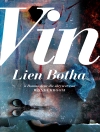The UNESCO World Heritage Convention is one of the most widely ratified international treaties, and a place on the World Heritage List is a widely coveted mark of distinction. Building on ethnographic fieldwork at Committee sessions, interviews and documentary study, the book links the change in operations of the World Heritage Committee with structural nation-centeredness, vulnerable procedures for evaluation, monitoring and decision-making, and loose heritage conceptions that have been inconsistently applied. As the most ambitious study of the World Heritage arena so far, this volume dissects the inner workings of a prominent global body, demonstrating the power of ethnography in the highly formalised and diplomatic context of a multilateral organisation.
Table of Content
List of Illustrations
Acknowledgments
Introduction
Chapter 1. A Day in the Life of the UNESCO World Heritage Committee
Chapter 2. The Promise of World Heritage
Chapter 3. Fulfilling the Promise
Chapter 4. Rebellion and Peace
Chapter 5. The Nation State
Chapter 6. Procedures
Chapter 7. Concepts
Chapter 8. Global North and South
Conclusion: Utopian Remnants and the Logic of Growth
References
Index
About the author
Christoph Brumann is Head of Research Group at the Max Planck Institute for Social Anthropology, Halle, and Honorary Professor of Anthropology at Martin Luther University Halle-Wittenberg. His books include World Heritage on the Ground: Ethnographic Perspectives (co-edited with David Berliner, Berghahn Books, 2016) and Tradition, Democracy and the Townscape of Kyoto: Claiming a Right to the Past (Routledge, 2012).












